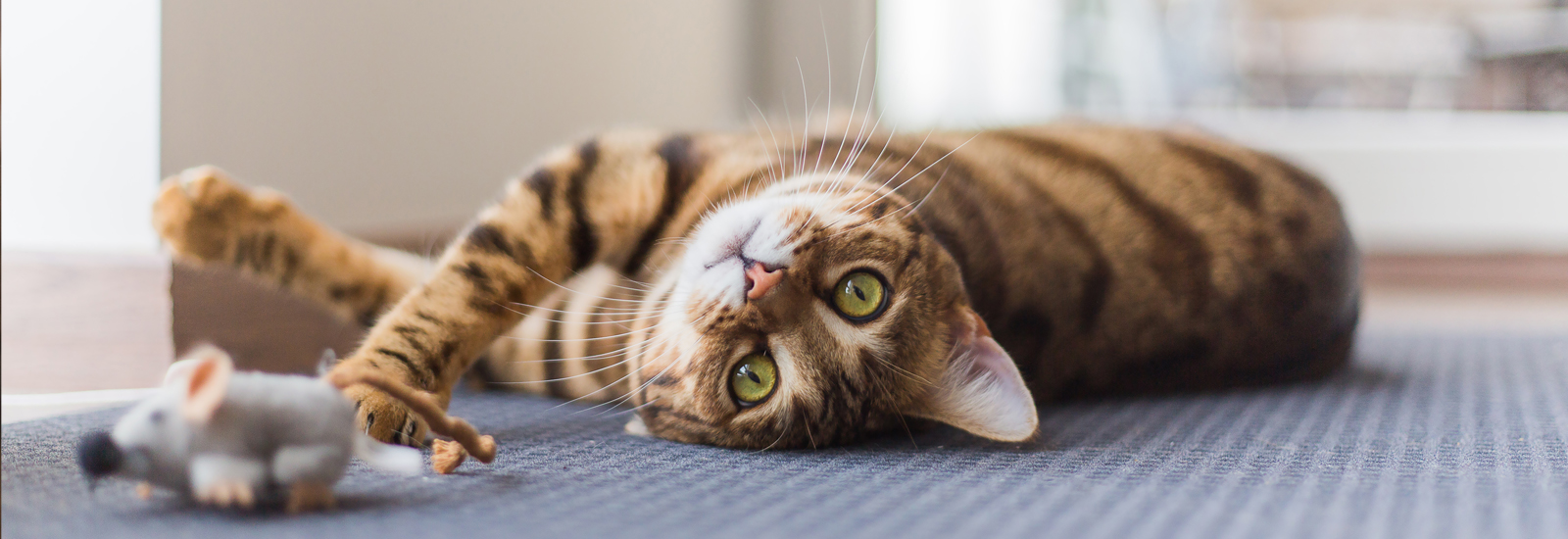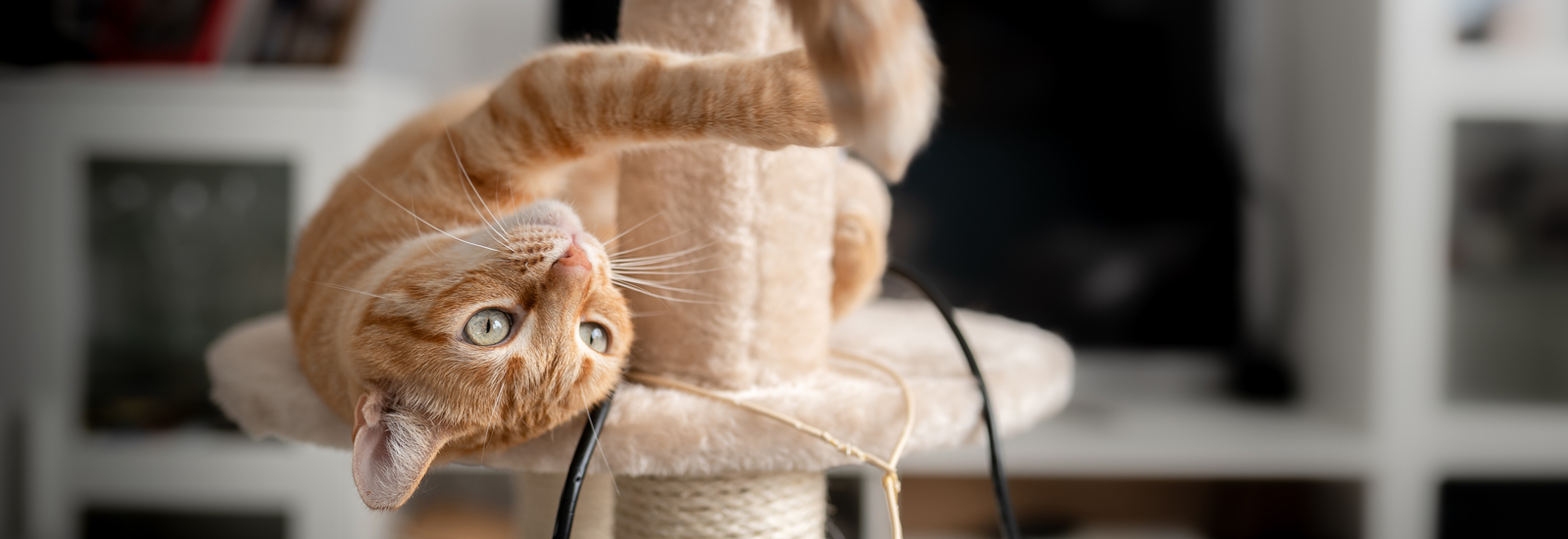Keeping cats occupied
Indoor cats encounter fewer stimuli than cats that are allowed outside. They should therefore be kept both physically and mentally active. Our ideas will help to make sure that your cat no longer gets bored.
Do cats get bored?
The life of a cat that is allowed outdoors is full of variety. If there is a cat flap, the cat is free to venture outside at any time and go exploring. There is no chance of it getting bored, because it has the chance to meet other cats, to check out new places and to go hunting. It is, however, quite different for indoor cats. There are major differences here as regards keeping them occupied. It all depends on the presence of other cats, the amount of time the cat spends with its owner and whether it has the right toys.
If you only have one cat, are not at home very often, have little time for your cat and have not provided enough activities in the form of toys and other belongings, then it is highly likely that your cat will suffer from boredom. This can result in an emotionally unbalanced cat that may well exhibit behavioural problems such as marking, constant meowing, and scratching your furniture. To prevent this from happening right from the start, or to help you quickly eliminate such problems, we have plenty of ideas for you.
Do cats prefer to live alone or with other cats?
The rumour still persists that cats are loners. But this is only true when it comes to hunting. After all, it makes little sense for two cats to pounce on the same mouse. The rest of the time they enjoy socialising with other cats. If you will be keeping your pet indoors, it would be best to consider having two cats.
Two kittens from the same litter that get along well with each other would be ideal, for example. And if you decide to visit an animal shelter, you could ask for two cats that seem to like each other. If you currently have just one cat and are thinking about getting it a companion, we can recommend our article “Getting cats used to each other”. Here you will find numerous tips on which types of cats go well together.
How can I keep my cat occupied in a meaningful way?
Cats occasionally have to stay at home alone, and even when we are there, we do not always have time for them. This makes it all the more important to provide them with a cat-friendly environment. For many cats, their lives revolve around a large cat tree. This will ideally go right up to the ceiling, provide several resting places at various heights, and perhaps even have a cave, ropes or other things to play with.
If these are not included as part of the cat tree, it may be possible to attach them afterwards. In this way, you will lay the foundations for a contented cat life. However, you can do even more: cats love to have several places to sleep in their home: these could include a blanket on the window sill, a sleeping place in your study or a cosy blanket on the sofa.
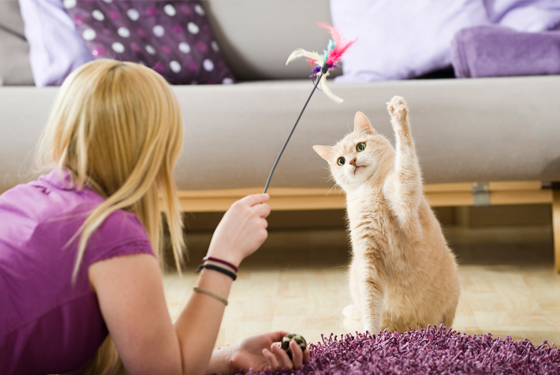
What are the best cat toys to keep your pet occupied?
When choosing a cat toy, it is important to distinguish between toys that the cat can play with on its own, and toys that allow you to play together with your pet. A cat household should always be equipped with both. When cats are on their own, they love to pass the time with toy mice, balls and soft, scented sachets. These should, however, not always all be there for the cat at the same time. In this respect, cats are similar to children: if there are too many things to do, they will pay less attention to them and soon become bored. It is better to change the choice of plaything regularly and occasionally buy your cat a new toy. Intelligence toys, for example, where your pet has to use its imagination to find its way to a tasty snack, are also much loved by cats.
The enjoyment is even more immediate with cat toys designed to encourage the cat and its owner to play together, for example, cat “fishing rods” with a toy fish, feathers or similar on the end of the line. This type of toy will provide lots of fun for both you and your four-legged friend. It is, however, important that the cat is allowed to catch the object attached. If you keep pulling the rod away before it can grab it, your cat will start to get frustrated.
For how long should I play with my cat?
It is not only kittens who are playful; the instinct to play is also still present in many older cats, sometimes well into their later years. This is a good thing and should be encouraged. Do not turn your cat away when it shows you that it wants to play, because playing together prevents your pet from getting bored, keeps its body healthy and stimulates its mind. For older cats, playing is a veritable fountain of youth. So do not be afraid to invite your older cat to play every now and then. This should not, however, be during its sleeping or eating time. In fact, many cats are very selective about when playtime should be. Their preferred times are often early in the morning and/or late in the afternoon. This can, however, be very different depending on the individual cat. After a while you will have figured out what makes your cat tick. It may well like to play three to four times a day, and the duration can vary from 10 to 15 minutes per play session.
Tip: cats enjoy being hunters, so when you play together, you should be the “prey”. Most cats will not normally like you chasing them. What they much prefer is repeatedly sneaking up on you and “surprising” you.
Spending time together is important
Keeping your cat occupied does not always have to involve a specific activity – simply getting your attention will also keep your pet interested and engaged. This, for example, is the case when you simply spend time talking to your cat or when you lie on the sofa together. Caring for your pet’s fur can also be one of those special moments that you spend together. Make sure that your cat is comfortable with you brushing its fur and that you do not cause it any pain when pulling the comb through it. Stroking is also much appreciated by cats. It is not only a pleasurable experience for your pet, but can also help it to relax.
You may also like this
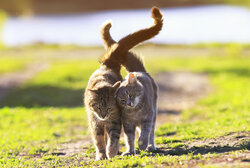
Getting cats used to each other
This is how you successfully get cats used to each other

Territorial behavior
Territorial behavior of outdoor and indoor cats
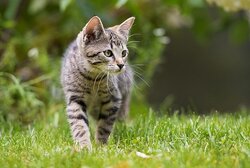
Getting your cat used to being outdoors
This is how you get your cat used to being outdoors
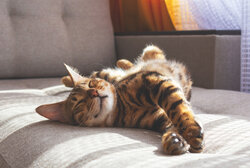
Cat language
Understanding and learning cat language
